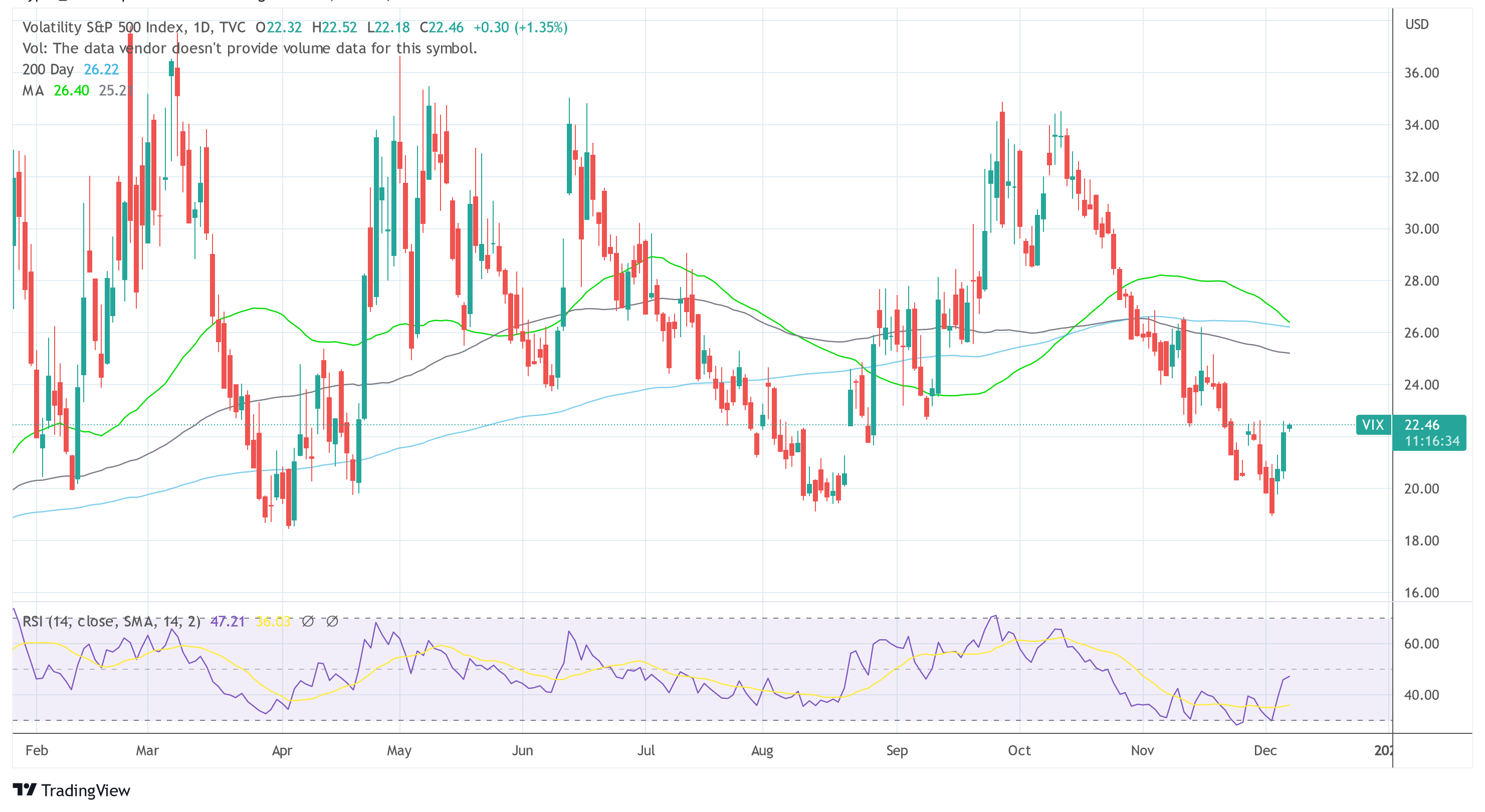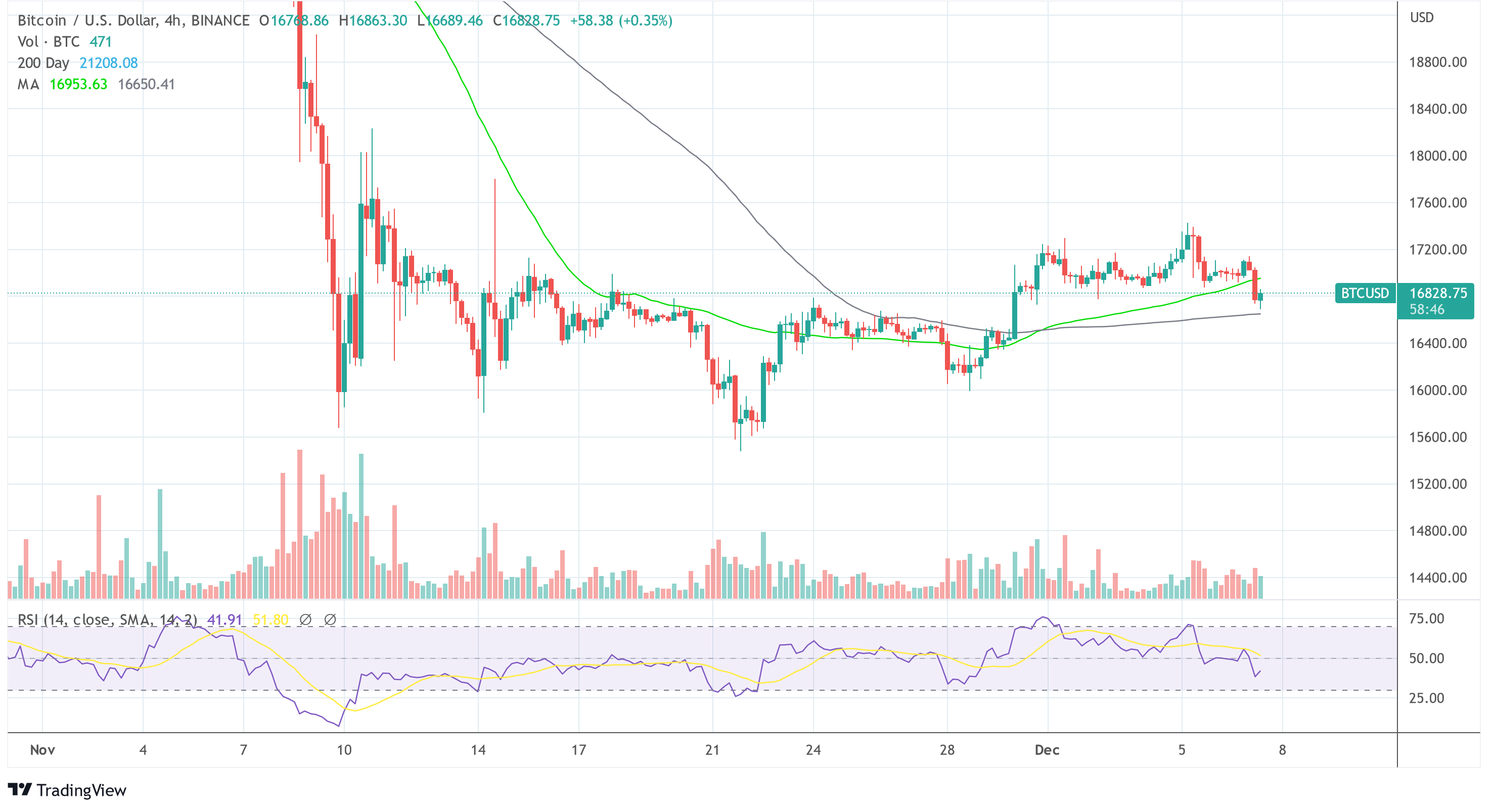Upswing in VIX Signals Doom For Bitcoin; Friday will be decisive
As NewsBTC reported, the VIX experienced a trend reversal last Friday, which could be significant for Bitcoin as well.
The VIX volatility index shows traders the expected range of volatility of the S&P 500. Notably, there is an inverse correlation between the VIX index and the S&P 500. A rising VIX index usually means falling prices for the S&P 500, and vice versa.
Rising VIX Threatens Bitcoin Bulls
The VIX fell below the 19 level on Friday, a mark that has been very significant over the past year.
In August, the last time the VIX was this low, it rose above 34, dragging the S&P 500 down 15%. Bitcoin also experienced a significant downtrend, driven by its correlation with the S&P 500.
On Monday, BTC bounced off horizontal resistance at $17,400 and fell below $17,000 as the VIX started its trend reversal with a stunning market open.

Yesterday, however, the Bitcoin bulls initially appeared to have the upper hand. While the S&P saw another 1.4% plunge, the BTC price remained relatively stable at $17,000.
However, in the last few hours, BTC has recorded a retracement of around 2% and $350. At one point, BTC fell to $16,691 after the VIX continued its uptrend and rose to a level of 22.46. At press time, the Bitcoin price was $16,828.
Investors should pay attention to the VIX. If VIX sees another spike today, BTC bulls could lose steam. Then the $16,600 and $16,300 support zones will be key.

Will Friday provide an omen for Bitcoin?
So given Bitcoin’s high correlation with the S&P 500, another decline could be imminent. However, the VIX should not be used as the only indicator. VIX is dependent on expectations based on past events.
In addition, the VIX cannot account for sudden, unexpected events that may cause strong market reactions. Historically, it has always been the case that the VIX could not predict a bottom.
Key events determine when a bottom is reached. However, since the VIX is calculated based on expectations, it cannot be a key to spotting a trend change due to sudden events in the market.
And the overshadowing event will be the next FOMC meeting on December 14, when the FED will decide on its future interest rate policy. Notably, the meeting will include a “summary of financial projections”.
But even before that, there are two extremely important pieces of data that provide predictions about how the FED will act.
While the new inflation data in the form of the consumer price index (CPI) is published on 13 December, the producer price index (PPI) is already published on Friday 9. December.
This will already give an insight into how the CPI data can turn out. This is because the PPI acts as a leading indicator for the consumer price index.
When producers face input inflation, increases in their production costs are passed on to retailers and consumers. Thus, PPI can be trend-setting.
If PPI and CPI continue to fall, at best more than expected, the chances of a goblin rally for Bitcoin are quite high.


